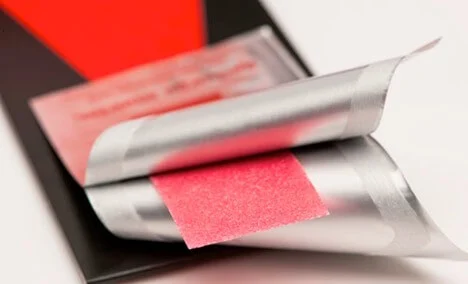In the areas of both weight loss and erectile dysfunction, Riize offers dissolving film strips as a means of administering the prescribed dosages. For weight loss, the active medication is Semaglutide, the same ingredient as in Ozempic®. (Riize weight loss Semaglutide is also available in injectable form). For erectile dysfunction, the active medication on the film strips is a combination of Sildenafil, Tadalafil and Oxytocin, with Sildenafil and Tadalafil being the same ingredients as in Viagra® and Cialis®, respectively.
The most important thing about Riize film strips is that they bring a new and unique way of delivering the medication for both weight loss and ED. Using thin film technology, domestically manufactured under strict guidelines, and prescribed through a secure, licensed telemedicine platform, Riize is taking the leading approach to the use of oral drug delivery.
What is oral drug administration?
Oral drug administration can mean simply taking drugs orally by ingesting or swallowing, as in the case of pills, capsules or liquids. However, for purposes here, we are referring to administering drugs through oral contact with the tissues and membranes inside the mouth, such as when drugs are allowed to dissolve in the mouth and are delivered to the system by being absorbed through the oral tissues and blood supply.
The history of oral drug administration
The ability of certain substances to enter into and effect a person’s physiology through contact with tissues in the mouth has been known for centuries. Whether used for stimulation, mood altering or relief from pain and discomfort, natural plant-based substances have been used in various cultures for thousands of years, primarily by chewing them. In addition to coca leaves (South America) and khat (East Africa and Southern Arabia), the betel nut is probably the most widely known of such substances today. Still used in Melanesia, South Asia and India by some 600 million people for its stimulant and euphoric affects, it’s history dates back some 7000 years, and is the world’s fourth most widely-used psychoactive, addictive substance after caffeine, nicotine and alcohol. In addition to these, willow bark was used (chewed) by Native Americans for centuries to relieve aches, pains and fever. Its active ingredient is salicin – the chemical that eventually formed the basis for aspirin.




To better understand how this relates to the development and use of sublingual, buccal and film strip medications, we need to look at it in context to the development of modern pharmacological medicine.
Other ways of administering drugs orally also goes back many centuries, with “pills”‘ being developed roughly around 1500 BC. They were made by mixing the active ingredient with some sort of food substance that could be formed, such as bread dough. Prior to that, substances that were prescribed for medicinal and health purposes were usually liquid recipes. Either way, both forms were taken by being swallowed.
Pills evolved in the ways they were made, and the materials used, into tablet forms with more consistent and accurate dosages. There is some reference to capsule formats being used in ancient Egypt, but their primary development occurred in the 1700’s and early1800’s. Since their inception, capsules have been seen as a superior form of taking medications in terms of being easier to swallow and a faster, more efficient bioavailability. They are the most preferred dosage form for both medications and supplements. However, developments in sublingual, buccal and specifically, film strip forms, are starting to change that. The science and technology behind Riize film strips is at the leading edge of these developments.
How were oral drug film strips developed?
The development of dissolving drug film strips grew out of the effectiveness that certain drugs had when administered either sublingually or buccally. Sublingual administration is where the drug is placed under the tongue. Buccal administration is where the drug is placed between the cheek and gum. Where and when the idea to administer certain drugs in this way came about is not specific, but it clearly can be linked to observations from ancient cultures that some substances effectively transfer systemically upon coming in contact with tissues in the mouth. In early modern medicine, one of the first examples of administering drugs this way was the use of nitroglycerin for angina in 1876 by William Murrell. To this day, nitro pills are used sublingually by certain heart patients. Other drugs commonly absorbed through sublingual or buccal administration include steroids, barbiturates, analgesics, CBD and some proteins. Vitamin and mineral supplements are increasingly being used this way also.
The initial forms of sublingual and buccal drugs were pills or liquids which would be absorbed by dissolving or otherwise coming in contact with tissues in the mouth. Oral dissolving drug film strips were invented in the late 1970’s to aid pediatric and geriatric patients who experienced pill swallowing difficulties. They are polymeric films that deliver their active ingredient upon dissolving, by maintaining contact with the delivery tissue. The first rapidly dissolving oral film strip (RDF) was for a personal care product, a breath freshener developed by Pfizer as Listerine® pocket packs™. The first oral thin film strip (OTF) was Chloraseptic®, for the therapeutic treatment of sore throat.
Film strips can be used buccally (between the cheek and gum), sublingually (under the tongue) or on top of the tongue. For example, Riize weight loss strips (semaglutide) are placed under the tongue, while Riize strips for ED (sildenafil/tadalafil/oxytocin) are placed on top of the tongue. In both cases, the drugs are released quickly into the system for maximum effectiveness.
What are the advantages of oral drug administration?
The tissues inside the mouth, referred to as the mucosa, has a thin membrane structure, and thus a high permeability. In some cases, it can be up to 4,000 times more permeable than the skin. The thin membrane structure also has a profuse and dense capillary system, giving substances immediate access to the general bloodstream. This results in quick and effective bioavailability for pills, chews and dissolving strips – the most common forms of orally administered drugs.




By entering systemic circulation directly blood stream via the oral tissue, the drug being administered retains more potency by avoiding degradation in the gastrointestinal tract and the first pass effects of normal metabolic processes.
Are there further advantages to drug film strips?
Because they are convenient and easy to use, film strips can improve patient compliance, resulting in greater consistency in sticking with a treatment regimen. There is also improved accuracy in dosing and enhanced product stability.
In addition, dissolving film strips are work much faster than even sublingual and buccal forms. For example, Riize strips for ED work 3x to 6x faster than similar products in chew and troch forms. In some cases, dissolving film strips are overall, 10x better than other drug delivery alternatives. Studies have shown thin films to improve the initial effect of the drug as well as the duration of the effect, thus decreasing the frequency of dosing, and increasing the effectiveness of the drug.
What is unique about Riize film strips?
While oral thin films have been around for some time, thin film technology has continued to improve the dosing, reliability and speed of drug delivery to the system. Riize has taken advantage of all those improvements in the design and production of both Riize oral strips for ED and Riize oral semaglutide weight loss strips. In the case of thin film oral strips for ED, Riize has the only thin film product combining sildenafil, tadalafil and oxytocin.
Both strips quickly and carefully deliver accurate doses directly to your bloodstream, allowing them to start working almost, with a greater amount of the dose intact. If you’re not a fan of pills or injections, or if you just want an easy and highly effective way to take your drug treatments for weight loss or ED, Riize strips are the perfect solution.
SOURCES
1. https://it.usembassy.gov/native-americans-many-contributions-to-medicine/ (native americans willow bark)
3. https://en.wikipedia.org/wiki/Khat
4. https://impakter.com/coca-is-not-cocaine-the-sacred-south-american-coca-leaf/
5. https://www.latimes.com/archives/la-xpm-2002-mar-25-he-booster25-story.html
6. https://en.wikipedia.org/wiki/Tablet_(pharmacy)
8. https://digital.teknoscienze.com/nutra_horizons_1_2021_ww/the_surprising_history_of_capsules
9. https://www.ncbi.nlm.nih.gov/pmc/articles/PMC6848967/
10. https://en.wikipedia.org/wiki/Sublingual_administration
11. https://accesspharmacy.mhmedical.com/content.aspx?bookid=3459§ionid=285256454
12. https://pubmed.ncbi.nlm.nih.gov/19062634/
13. http://hoefliger.com/en/applications/medication-intake-through-oral-and-buccal-film-strips/
14. https://www.ncbi.nlm.nih.gov/pmc/articles/PMC7957312/
15. https://pubmed.ncbi.nlm.nih.gov/36171494/





